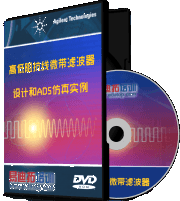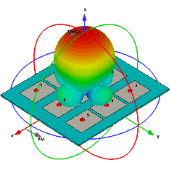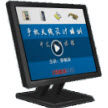CST MWS如何设置材料电导率随温度改变而变化
05-08
需要仿真超导体材料,请问CST如何设置材料电导率随温度改变而变化
.SetTemperatureDepSourceField "field1"
.AddTemperatureDepEps "270", "1.0"
.AddTemperatureDepEps "280", "1.1"
.AddTemperatureDepEps "290", "1.4"
.AddTemperatureDepEps "300", "1.9"
.AddTemperatureDepEps "310", "5.0"
After definition the material table can be visualized as a 1D plot by selection in the navigation tree:
If possible a spline interpolation is computed with the given data, which will be visualized together with the user data. If the interpolated data is available the solver uses this curve for evaluation, otherwise the entered data is interpolated linear. After the transient solver has computed a material distribution, it is stored as a 3D result in the navigation tree.
你仿真的过程中,要仿真温度的变化吗?
可以仿真多种情况。
第一种是零下50度的。
第二种是零下100度的。
对的,小编碰到过类似的仿真情况吗,希望得到你的帮助
但是每仿真一次就要重新设置一次,我是想能不能像参数扫描分析那样可以设置成变量仿真
你可以将介电常数什么的都设置成变量,然后进行参数扫描,就像温度变化一样
比如介电常数在温度0~100度下由5变成了10,那就可以设置介电常数为一个参数x,然后对x进行参数扫描,这样就和温度变化一样了
小编可以使用Thermal dependent Material (only accessible via VBA command interface):
The transient time domain solver can handle materials with temperature dependent permittivity-, permeability- and conductivity-parameters of the normal and anisotropic material classes. A temperature dependent material definition consists of:
a reference to a previously defined temperature field import and
a table which defines a material parameter vs. temperature.
.SetTemperatureDepSourceField "field1"
.AddTemperatureDepEps "270", "1.0"
.AddTemperatureDepEps "280", "1.1"
.AddTemperatureDepEps "290", "1.4"
.AddTemperatureDepEps "300", "1.9"
.AddTemperatureDepEps "310", "5.0"
After definition the material table can be visualized as a 1D plot by selection in the navigation tree:
If possible a spline interpolation is computed with the given data, which will be visualized together with the user data. If the interpolated data is available the solver uses this curve for evaluation, otherwise the entered data is interpolated linear. After the transient solver has computed a material distribution, it is stored as a 3D result in the navigation tree.
有中文版的么,有点吃力
把电导率设置为变量,在扫频中设置不同数据应该可以吧,想问小编从哪里可以得到温度与电导率的数据或曲线,能否提供一些参考资料。
我想问下小编,设置好随温度变化的材料,这个温度从哪来呢?
相关文章:
- 请问,随着径向r和轴向z电导率渐变的介质圆柱,如何设置 (05-08)
- CST MWS模型电导率能否从文件引入 (05-08)
- CST仿真超导体如何设置电导率的虚部 (05-08)
- cst材料库问题 (05-08)
- 如何在cst中设置材料二次电子发射系数? (05-08)
- 不同材料交界面的折射现象如何仿真? (05-08)
射频专业培训教程推荐











